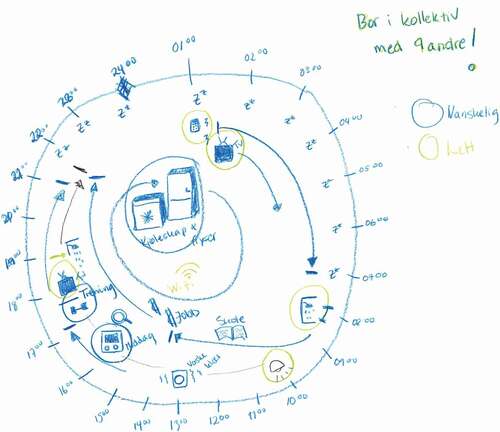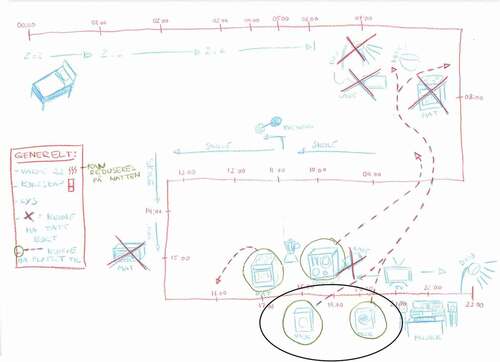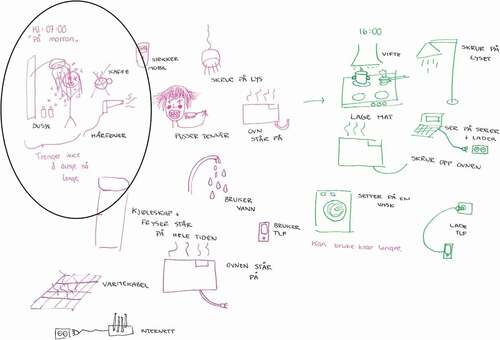Figures & data
Table 1. Overview of students
Figure 1. Example of a student’s illustration of energy consumption regarding flexibility and inflexibility in daily life. The green text in the upper right part translates as ‘Live in a collective with nine others!’ The yellow circles (Lett) indicate what activities were considered easy to shift and cut (flexible) and the blue circles (Vanskelig) indicate what activities were perceived as complicated to shift and cut (inflexible).

Table 2. Summary of observations relating to laundry
Table 3. Summary of observations relating to showering
Table 4. Summary of observations relating to ICT
Figure 2. Student’s illustration of a typical day, indicating that laundry (vask, tørk) was flexible and could be moved from late afternoon or early evening to morning.

Figure 3. Student’s illustration indicating that time spent showering could be reduced: “No need to shower for so long” (Trenge ikke å dusje så lenge).

Figure 4. Student’s illustration indicating that some activities are hard to move due to social rhythms: ‘Hard to change: things connected to the rhythm of work/education, things that are determined by timetables. Must eat dinner between education and sleep’ (Vanskelig å flytte: ting knyttet til rytmen av jobb/utdanning. ting fastsatt til tid. Må spise middag mellom utedanning & sovn). ‘The university[:] hard to change’ (Universitetet[:] vanskelig å flytte).
![Figure 4. Student’s illustration indicating that some activities are hard to move due to social rhythms: ‘Hard to change: things connected to the rhythm of work/education, things that are determined by timetables. Must eat dinner between education and sleep’ (Vanskelig å flytte: ting knyttet til rytmen av jobb/utdanning. ting fastsatt til tid. Må spise middag mellom utedanning & sovn). ‘The university[:] hard to change’ (Universitetet[:] vanskelig å flytte).](/cms/asset/3a367c85-ff39-4e06-b083-29a61917190d/uesb_a_1937403_f0004_oc.jpg)
